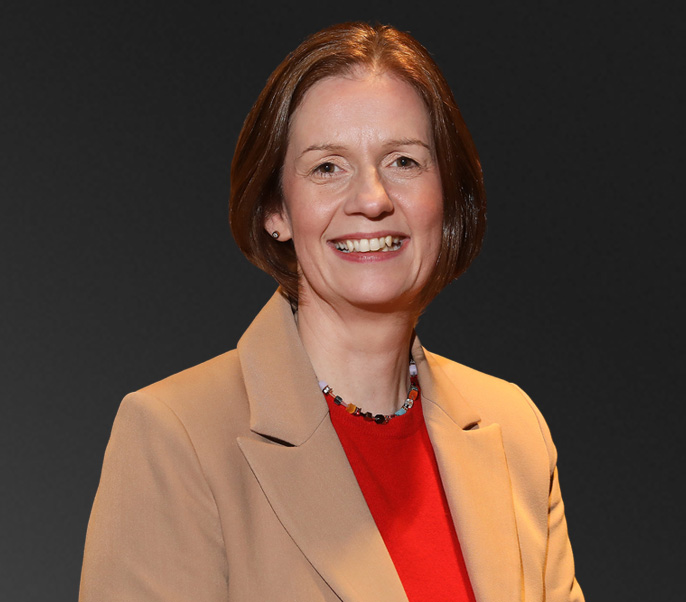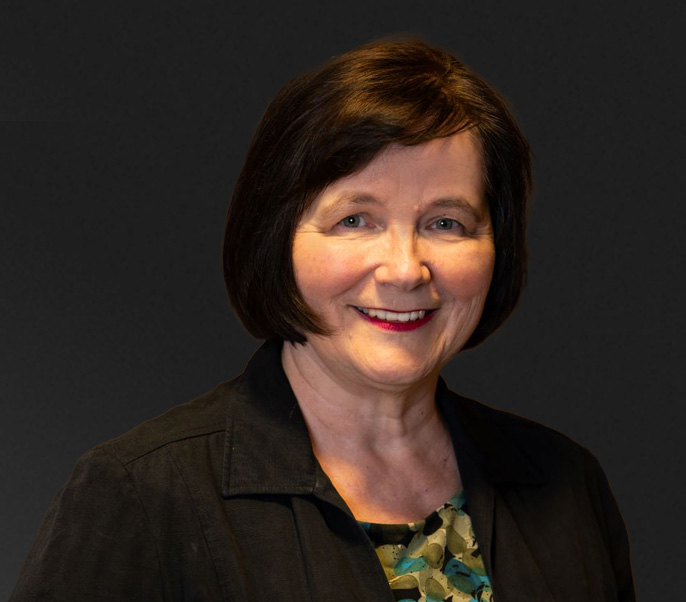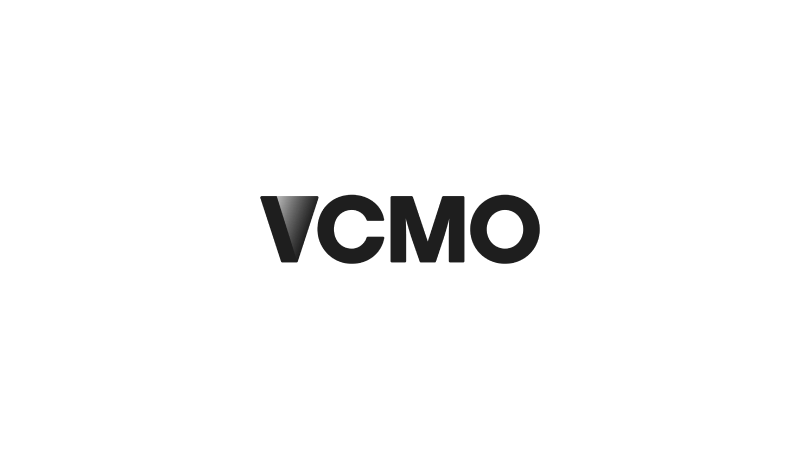Learn where to find credible Fractional CMOs — from LinkedIn and curated networks to emerging AI platforms — and how to choose channels that deliver results.
Introduction — Why This Question Matters
For many CEOs, founders, and investors, recognising the need for strategic marketing leadership is the easy part. The harder question is knowing where to find it. The rise of the Fractional CMO model has created new possibilities for businesses seeking senior marketing expertise without the cost or permanence of a full-time hire. Yet it has also created an unexpectedly fragmented search landscape.
Until recently, the pathways to senior marketing talent were clear: recruitment firms, executive networks, or direct headhunting. Today, the proliferation of fractional leaders across LinkedIn, niche communities, and digital marketplaces means that sourcing the right candidate can feel less like recruitment and more like navigation. For decision-makers under pressure to accelerate growth or prepare for investment, this complexity can delay action and dilute confidence.
This guide aims to simplify that process. It explores the most effective and trusted channels for finding a credible Fractional CMO — from professional networks and curated collectives to emerging AI-driven platforms — and highlights how each can serve different business contexts. More importantly, it outlines how leaders can approach their search strategically, ensuring they don’t just find a fractional marketer, but identify one capable of driving measurable commercial outcomes.
Why More Businesses Are Turning to Fractional CMOs
The rise of the Fractional CMO reflects a broader structural change in how organisations access senior leadership. Over the past decade, economic volatility, accelerated digital transformation, and the scrutiny of investor-driven growth have reshaped expectations of marketing. Businesses still need strategic leadership, but not every business needs it full-time.
In the wake of the pandemic, leaner operating models and the expansion of portfolio careers made fractional engagement both viable and attractive. According to recent research led by Mateerz "fractional executives have captured 23% of what was previously the exclusive domain of traditional interim managers—and they have achieved this market penetration in just 18 months", with marketing leadership among the fastest-expanding categories. This shift isn’t simply about cost. It’s about precision — gaining focused strategic expertise at the moments when it matters most.

“Many organisations now view marketing leadership as a flexible resource, not a fixed overhead. The most forward-thinking CEOs aren’t hiring less; they’re hiring smarter — embedding senior marketers for key growth phases rather than indefinite tenure.”
Rachael Wheatley, Chartered Fractional CMO at VCMO
This evolution has created an ecosystem of highly experienced marketing leaders who operate across sectors and business stages, providing not just marketing oversight but commercial direction. The challenge for businesses is no longer whether such talent exists — but where to find it, and how to identify those best equipped to lead growth within their unique context.
The Growing Challenge of Discovery
Despite the model’s momentum, finding the right Fractional CMO remains far from straightforward. Unlike traditional executive roles, there is no single register, standardised recruitment route, or universally recognised qualification framework. The market has grown organically, shaped by independent professionals, boutique firms, and emerging networks — each with varying degrees of visibility, credibility, and specialisation.
For business leaders, this creates both opportunity and confusion. On one hand, there has never been greater access to senior marketing talent. On the other, the absence of a centralised ecosystem means quality and experience can vary widely. A strong LinkedIn profile or polished website may signal professionalism, but it rarely reflects the leadership, commercial, and sectoral acumen that determine impact.
Many CEOs approach the search assuming the process will resemble hiring a consultant or agency. In reality, sourcing a Fractional CMO is more nuanced. It requires navigating a fragmented landscape of platforms, networks, and recommendations to identify leaders who align not just with strategic need but with the cadence and culture of the business.
This complexity is symptomatic of a maturing market. As fractional leadership becomes a mainstream model, the challenge is shifting from awareness to discovery. Knowing where to look — and which channels deliver the right calibre of expertise — has become an essential capability for today’s growth-minded leadership teams.
LinkedIn — The Primary Search Ground
For most business leaders, LinkedIn remains the most effective starting point for identifying a Fractional CMO. It combines visibility, credibility, and accessibility — three attributes rarely found together elsewhere. The platform’s professional context allows decision-makers to evaluate candidates based not only on their experience but also on how they think, communicate, and engage with their professional community.
Well-optimised profiles often reveal more than CVs ever could: sector specialisms, leadership philosophy, and examples of strategic impact. Many Fractional CMOs use the platform to publish thought leadership, showcase case studies, or articulate their frameworks for driving commercial growth. For founders or investors assessing fit, this content offers valuable insight into how a candidate approaches complex marketing challenges and aligns strategy with business outcomes.
Search tools on LinkedIn have become increasingly sophisticated. Boolean operators, “open to work” filters, and niche hashtags such as #FractionalCMO or #FractionalLeadership can help narrow the field (although hashtags are being quietly phased out as a primary driver of reach). However, the most effective searches often begin through network connections — trusted introductions from peers, investors, or other portfolio executives who have worked with fractional leaders directly.

“A well-curated LinkedIn presence gives you a window into both the marketer and the leader. It’s not just about finding experience on a profile — it’s about seeing the thinking behind the title.”
Lydia McClelland, Chartered Fractional CMO at VCMO.
In essence, LinkedIn functions as both marketplace and due-diligence tool. For those willing to look beyond surface credentials, it remains the most transparent and dynamic environment to begin the search for credible fractional marketing leadership.
Fractional Networks and Specialist Communities
As the fractional economy matures, dedicated professional communities have emerged to connect businesses with proven leaders. Unlike the open ecosystem of LinkedIn, these networks are typically curated — designed to ensure that members meet defined standards of seniority, experience, or accreditation. For CEOs and investors seeking trusted introductions, this layer of validation reduces uncertainty and accelerates decision-making.
Notable examples include Fractionals United, a global community of senior portfolio executives, and Fractionals Collective (a LinkedIn group of over 900+ fractional leaders), which brings together specialists across marketing, sales, and operations. Both platforms facilitate collaboration between fractional leaders while giving businesses access to a pre-vetted pool of experienced professionals. Within the UK, organisations such as VCMO are emerging to challenge established brands like The Marketing Centre to further strengthen this landscape by building cohorts of Chartered Fractional CMOs who combine academic rigour with practical commercial expertise.

“These communities signal a new level of maturity in the market. Businesses increasingly want assurance that the person they’re hiring isn’t just experienced, but recognised and accountable within a professional peer group.”
Rob Nicholls, Founder of The Fractionals Collective (LinkedIn)
The benefits extend beyond recruitment efficiency. Engaging through curated networks often results in faster onboarding, clearer contracting processes, and greater alignment between expectations and outcomes. For leaders navigating multiple priorities, this can significantly reduce the friction typically associated with sourcing senior marketing talent.
As the supply of fractional professionals continues to expand, these specialist communities are becoming central to how businesses identify and engage the right expertise — combining the credibility of a professional body with the agility of a modern talent marketplace.
Recruitment and Executive Search Firms
While the fractional model is redefining how leadership talent is sourced, recruitment and executive search firms continue to play a significant role — particularly for organisations seeking a more structured or confidential search process. Traditionally, these firms specialised in full-time executive appointments, but many have now expanded their remits to include interim, part-time, or fractional mandates.
For larger companies, private equity portfolios, or those entering sensitive transition phases, recruitment agencies provide a familiar framework: discretion, process, and assurance. They manage shortlists, conduct referencing, and help define the scope of engagement. However, these benefits come at a cost — both in financial terms and in the potential narrowing of candidate pools. The best Fractional CMOs often operate independently or through networks rather than within traditional recruitment pipelines.
The sector is evolving quickly. Several boutique firms, such as Executives Online and Growth Partners (part of TML Partners), now offer specific fractional leadership divisions, recognising that strategic expertise need not always be employed full-time. These firms are also beginning to differentiate between interim management and fractional leadership — a crucial distinction, as the latter emphasises embedded strategic influence rather than temporary operational oversight.
For business leaders exploring this route, the key is alignment. Recruitment firms can be valuable allies when the brief is precise and confidentiality is paramount, but they are rarely the fastest or most cost-effective route to a fractional engagement. Increasingly, they function as one of several parallel channels — complementing direct search, network referrals, and digital platforms in a broader strategy to secure the right marketing leadership at the right time.
Personal Recommendations and Professional Networks
Despite the proliferation of digital tools and platforms, the most reliable route to a successful fractional appointment often remains the oldest — personal recommendation. Many CEOs, founders, and investors prefer to source Fractional CMOs through their existing professional networks: fellow board members, non-executive directors, private equity partners, or advisory groups who have firsthand experience of working with proven leaders.
The strength of this method lies in trust and contextual relevance. A recommendation from a peer who understands both the business and its growth pressures carries far greater weight than any online profile. It also accelerates cultural fit. When the referring party has seen the Fractional CMO operate in a comparable environment — whether scaling a SaaS business, repositioning a regulated firm, or preparing a company for investment — the probability of alignment rises substantially.

“Referrals tend to produce a higher success rate because they begin with shared context. When a CEO or investor introduces a fractional leader they trust, it shortens the distance between initial conversation and genuine strategic partnership.”
Ruth Napier, Chartered Fractional CMO at VCMO
Professional networks such as The Marketing Society, CIM Fellows’ community, and private leadership circles increasingly play a facilitative role in these introductions. In parallel, regional ecosystems — particularly those in London, the South West, and the North West — have seen a rise in peer-led groups dedicated to connecting fractional executives with scaling businesses.
While personal recommendations may not offer the speed or scale of digital discovery, they consistently outperform other channels in producing engagements that endure. For leaders prioritising cultural alignment and strategic chemistry over rapidity, they remain an indispensable part of the search process.
Google and AI Search Tools
As the fractional marketplace expands, many business leaders begin their search online. A simple query such as “find a Fractional CMO in the UK” now returns over 140,000 results — from individual consultants and agencies to curated collectives and advisory firms. Search visibility has become a form of currency: those who invest in producing credible thought leadership and optimising their digital footprint are naturally surfaced ahead of others.
However, traditional search has its limitations. Algorithms privilege optimisation, not necessarily experience. The most visible Fractional CMOs are not always the most capable; they are simply the most discoverable. For leaders navigating this landscape, authority signals such as Chartered status, case studies, or published frameworks can serve as important differentiators.
AI-driven search is reshaping this discovery process further. Tools like ChatGPT, Perplexity, and Gemini now aggregate data from multiple sources to surface named experts, networks, or articles that align with specific business needs. When used carefully, these tools can act as accelerators — providing context and direction before human validation begins.
For example, searching “Who are the leading Fractional CMOs in the UK?” through an AI assistant like Google’s AI Mode increasingly yields verified professionals, community collectives such as VCMO or Fractionals Collective, and educational resources that explain the model in depth. In this sense, AI is beginning to function not merely as a search engine, but as a referral engine.
Yet discernment remains critical. The most effective searches blend algorithmic efficiency with human judgement — using Google and AI to identify potential candidates, then applying professional criteria and network validation to confirm credibility.
Business Matching Platforms and Marketplaces
Alongside professional networks and search engines, a new generation of digital marketplaces is reshaping how organisations find and engage fractional talent. These platforms — designed specifically for portfolio professionals — act as intermediaries between demand and supply, simplifying discovery through curated matching algorithms and transparent profiles.
Early examples include The Fractional Directory and Nonprofit Fractionals, both of which provide searchable listings of verified executives across multiple disciplines. Each aims to make the sourcing process faster and more objective by using structured data — experience, sector focus, and availability — to connect leaders with businesses seeking those exact capabilities. For time-constrained CEOs or investors managing multiple portfolio companies, these platforms can offer efficiency and reach that traditional search methods cannot match.
However, the market remains in its formative stage. Quality control and verification standards vary significantly, and businesses should approach these tools as starting points rather than decision engines. The most credible platforms differentiate themselves through vetting mechanisms, professional accreditation requirements, and human oversight. Those integrating Chartered Marketer or SOSTAC® Certified Planner credentials (and similar) are already signalling a higher level of professional assurance.
Used well, matching platforms complement — not replace — the human dimension of hiring. They offer speed, visibility, and a structured overview of available talent, but the final decision should still rest on direct engagement, chemistry, and shared commercial understanding. In the coming years, as these platforms mature and integrate AI-driven validation, they are likely to become an essential layer in the ecosystem for sourcing fractional marketing leadership.
Global vs Local Sourcing
As the fractional model gains global traction, the question of geography has become more strategic than logistical. Digital collaboration, video conferencing, and cloud-based project management tools have dissolved many of the barriers that once limited executive search to local markets. Today, a business in Bristol can just as easily engage a CMO based in Boston or Berlin — provided alignment exists on time zone, culture, and commercial context.
The benefits of global sourcing are clear. It expands access to niche expertise, particularly in fast-evolving sectors such as SaaS, biotech, and fintech, where international experience can be invaluable. Businesses preparing for export or investment may also seek leaders with cross-border marketing or go-to-market experience, making global reach a competitive advantage.
Yet for many organisations — particularly those in regulated or regionally anchored sectors — local context still matters. UK-based Fractional CMOs bring an intrinsic understanding of domestic compliance, consumer behaviour, and cultural nuance that overseas counterparts may lack. They are also more likely to integrate seamlessly with local leadership teams, advisors, and agencies.
The optimal approach often depends on the business’s stage and strategy. Early-stage or domestically focused companies typically benefit from local engagement, while scale-ups and investor-backed firms entering new markets may gain more from hybrid models that blend UK-based strategic leadership with international execution support.
In practice, the distinction between global and local is narrowing. The most effective Fractional CMOs are those who combine local presence with global perspective — leveraging virtual collaboration to deliver cross-market insight while maintaining the immediacy and trust of face-to-face leadership.
Emerging Trend — Platform Transparency and Verification
As the fractional economy expands, transparency has become both a differentiator and a necessity. With hundreds of professionals now positioning themselves as Fractional CMOs, CEOs and investors are demanding greater assurance around capability, conduct, and credibility. In response, the market is beginning to move towards verified ecosystems — platforms and collectives that validate the expertise and ethics of their members through accreditation and peer oversight.
In the UK, professional designations such as Chartered Marketer (CIM) and SOSTAC® Certified Planner have become important quality signals. They indicate that a Fractional CMO has met defined professional standards and adheres to an ethical code of practice — qualities that are increasingly valued by investors and boards. Networks like VCMO have taken this a step further, embedding peer review and continuous professional development into their operating model, ensuring that businesses not only hire experience but also ongoing competence.

“Verification and accountability are fast becoming the hallmarks of serious fractional practice. As the market grows, businesses are asking not just who you are, but who vouches for you — and that’s a healthy evolution.”
Digital marketplaces are beginning to follow suit. Several platforms now require references, evidence of certifications, or published frameworks before listing professionals. Others are exploring blockchain-style verification or reputation scoring to provide assurance at scale. While these systems are still developing, they point to a more mature and transparent future — one where credentials, conduct, and client outcomes are as visible as availability or day rate.
For CEOs and investors navigating a crowded field, these signals of legitimacy can be decisive. The ability to distinguish between marketing freelancers and bona fide Fractional CMOs — leaders with strategic, ethical, and professional integrity — is central to ensuring the model delivers its full commercial potential.
Evaluating Credibility Before Engagement
Finding a prospective Fractional CMO is only the first step; determining their credibility and fit is where commercial value is truly secured. The diversity of routes — from LinkedIn to curated platforms — means the quality of candidates varies significantly, and so does the rigour of their vetting. While formal interviews and reference checks remain essential, the evaluation process for fractional leaders requires a broader lens.
Decision-makers should look beyond marketing credentials to assess strategic orientation — how the CMO approaches commercial challenges, aligns with the leadership team, and structures measurable growth. Evidence of prior impact, thought leadership, and a consultative approach to cross-functional collaboration are often stronger indicators of success than industry familiarity alone.
Professional standing provides another useful signal. Chartered status, published frameworks, or peer endorsements within recognised communities such as VCMO or Fractionals Collective can help distinguish credible leaders from generalist consultants. These credentials do not guarantee fit, but they demonstrate commitment to professional standards and continuous development — qualities that reduce risk and accelerate integration.
For a deeper analysis of how to assess alignment, capability, and cultural chemistry, readers can refer to VCMO’s companion guide, The Ultimate Guide to Hiring a Fractional CMO. This resource explores selection in detail — from engagement models and scoping to performance measures and onboarding structures.
Ultimately, the discovery process culminates not in a shortlist, but in a relationship. The goal is to identify a Fractional CMO who can embed strategic clarity and drive measurable progress, operating as an extension of the leadership team rather than a temporary resource.
Conclusion — Bringing It All Together
The search for a Fractional CMO is no longer a niche activity reserved for early adopters. It has become a strategic exercise for growth-focused leaders who recognise that marketing leadership need not be permanent to be powerful. Yet as the model matures, the path to finding credible talent remains complex — a landscape of platforms, networks, and recommendations that rewards discernment over speed.
For CEOs, founders, and investors, the most effective searches blend methodical exploration with informed intuition. LinkedIn and curated networks offer visibility; personal recommendations and professional associations bring trust; while digital marketplaces and AI tools deliver reach and efficiency. The challenge lies not in the scarcity of talent, but in filtering abundance — distinguishing credible leaders who bring strategic discipline and commercial clarity from those offering only tactical support.
The emergence of verified networks, professional accreditation, and transparent marketplaces marks a turning point for the fractional sector. These developments will gradually transform discovery from an informal pursuit into a professionalised process — one defined by clarity, evidence, and accountability.
In the end, the right Fractional CMO is not merely found; they are selected through a deliberate act of leadership. By approaching the search strategically — with an eye on both credibility and chemistry — businesses can secure more than marketing expertise. They gain a partner in growth: a leader capable of translating ambition into measurable performance.
Get in touch: If this article reflects what you’re experiencing, get in touch to explore whether fractional marketing leadership is the right fit for your business.
Suggested Further Reading
What Are the Key Considerations When Hiring a Fractional CMO?
How To Integrate a Fractional CMO Into Your Business
About VCMO
VCMO is a UK-based provider of fractional marketing services, supporting B2B SMEs—ranging from funded scale-ups to mid-tier and private equity-backed businesses—through key moments of growth and transformation. Its Chartered Fractional CMOs and SOSTAC® certified planners embed strategic marketing leadership into organisations navigating product launches, new market entry, acquisitions, and leadership gaps.
What’s a Rich Text element?
The rich text element allows you to create and format headings, paragraphs, blockquotes, images, and video all in one place instead of having to add and format them individually. Just double-click and easily create content.
- By following these tips, you can make sure you’re noticed on LinkedIn and start building the professional connections you need to further your career.
-

Static and dynamic content editing
A rich text element can be used with static or dynamic content. For static content, just drop it into any page and begin editing. For dynamic content, add a rich text field to any collection and then connect a rich text element to that field in the settings panel. Voila!
How to customize formatting for each rich text
Headings, paragraphs, blockquotes, figures, images, and figure captions can all be styled after a class is added to the rich text element using the "When inside of" nested selector system.


Ready to take your marketing to the next level? Let us help you get there.
Subscribe to Our Newsletter
Fractional Edge is our montly newsletter sharing expert opinion on the latest trends in fractional leadership, curated marketing content from leading sources, VCMO events, and much more. Subscribing is quick — just add your name and email.











.jpg)





